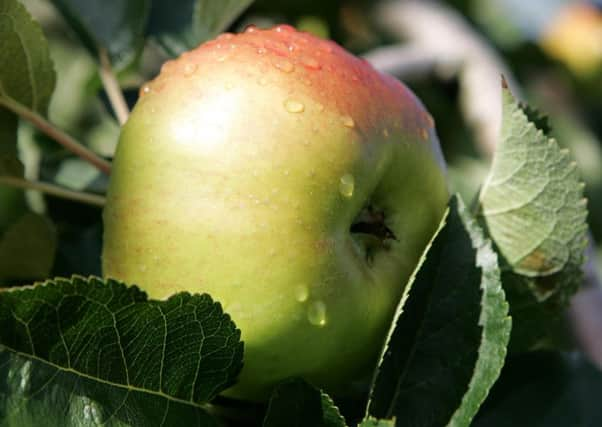It's time to celebrate a firm favourite in Ulster kitchens '“ the Bramley Apple


The first Bramley apple tree was grown in 1809 from pips planted by a young girl called Mary Ann Brailsford at her home in Southwell in Nottinghamshire. A butcher named Matthew Bramley bought the house and garden in 1846.
Local nursery man Henry Merryweather asked to take some cuttings from the tree to sell and Matthew agreed provided the tree was known as the Bramley. In 1883, a Mr Nicolson of Cranagill House in Co Armagh, bought 60 seedlings from Henry. At this stage there were over 100 different varieties of apple tree growing in the county. The Bramley thrived in Armagh – thankfully it’s a fruit that likes a good dousing of rain all year round.
Advertisement
Advertisement
As it flourished, it usurped the other apples growing in the region and is now the most commonly available apple. In 2012 it was awarded Protected Geographical Indication ( PGI ) status making it an iconic protected product, alongside other legendary foods like English Stilton cheese and Italian Parma ham.
Bramley apples need a liberal lashing of sugar to take away their natural tartness. One of my favourite childhood memories is watching my mother make an apple tart and being allowed to dip pieces of the sharp fruit into the sugar bowl.
I still adore apple tart, especially warm from the oven, it’s crisp pastry giving way to sweet, soft and sharp fruit. A lot of chefs prefer to use Granny Smith apples when they need sharpness as they hold their shape better when cooked, as the Bramley tends to go mushy.
The chef Gordon Ramsay got into a bit of trouble many years ago when he was commissioned to do Bramley recipes.
Advertisement
Advertisement
He substituted them for French Granny Smith citing that they were easier to cook with, and a huge row erupted with protests outside his restaurant in Chelsea.
The Bramley is only grown in Britain and you can understand the growers, who were paying him royally, for their raised blood pressure. For me, the fact that it goes a bit squishy only adds to the character of this unique fruit.
Warm apple sponge, crunchy apple crumble and apple charlotte are all perfect ways of serving bramleys as a pudding but they’re versatile as an accompaniment to savoury dishes too. Tart apples are the perfect foil for fatty meats – hence pork and apple sauce, but they also work well with roast duck and provide a zingy foil to oily fish like mackerel, eel or salmon.
There are many fine artisan cider makers in Northern Ireland who use the Bramley in their production to great effect. It gives a unique crispness to their drinks.
Advertisement
Advertisement
My two recipes this week use both Armagh Bramley apples and cider. The first is for an apple pudding with a layer of apple jelly, topped with sliced apples and then baked with a cider sponge. There are many apple jelly makers here who preserve the precious orchard harvest – local butchers and delis provincewide stock their products.
The second recipe is for pork shoulder, slowly cooked with cider, fennel, rosemary and garlic, shredded and served in a bun with a zingy apple and red cabbage slaw.
I’m over the whole pulled pork carry on but this takes great local ingredients to another level.
We sometimes take the wonderful things on our doorstep for granted so this is the perfect week to embrace our delicious national fruit.